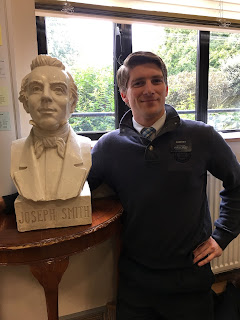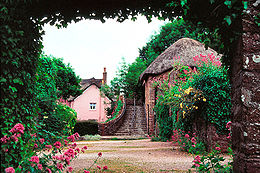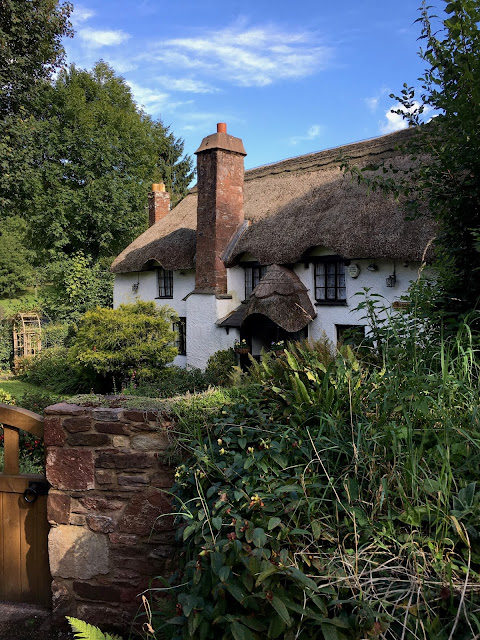Trip to Devon and Exeter for the Senior Missionary Conference
On August 30th Sister Parker and I traveled to Devon and then to Cornwall before our senior missionary conference in Exeter.
 |
Portreath - A sand and shingle beach set in a steep valley. To the western end of the beach are high cliffs and another smaller cove which is separated by the high tide. There are a couple of interesting rocks just off the coast.
The other end of the beach is bounded by a granite wall which protects the narrow harbor. Once a busy port, importing coal and exporting copper, but now only sheltering the occasional fishing boat
|
 |
| Coast at Camborne, England, United Kingdom |
 |
| Hayle, England, United Kingdom |
 |
| Hayle, England |
 |
| Hayle, England |
 |
| Hayle, England |
Godrevy Lighthouse was built in 1858–1859 on Godrevy Island in St Ives Bay, Cornwall. Standing approximately 300 meters off Godrevy Head, it marks the Stones reef, which has been a hazard to shipping for centuries.
Wikipedia
 |
| Hayle, England, United Kingdom- Notice the seals sunning themselves on the beach. |
The Grey Seal – Halichoerus grypus qualifies as the UK's largest land mammal as it regularly hauls itself out into isolated coves around the Cornish coast. Here at Mutton Cove it is possible to observe these beautiful animals from the cliff top without disturbing them.
 |
| Plymouth downtown tower |
Plymouth is a port city in Devon, southwest England. It’s known for its maritime heritage and historic Barbican district with narrow, cobbled streets. The Mayflower Steps are where the Pilgrim Fathers set sail for the New World in 1620.
 |
| Passing through Plymouth on our way to Exeter. |
 |
| View outside our hotel window in Exeter. We were stuck in the hotel elevator when it stopped between floors. (You may know of Elder Parker's claustrophobia!) He figured out how to open the door and let us out due to his knowledge from working at Aspen Grove, plus he didn't want to spend any more time in there! Good thing we were only a few feet from the level of the floor where we needed to be... |
 |
| Our Senior Missionaries. Elder and Sister Parker far left |
Exeter Cathedral
 |
| Sister and Elder Parker outside of Exeter Cathedral |
Exeter Cathedral, properly known as the Cathedral Church of Saint Peter at Exeter, is an Anglican cathedral, and the seat of the Bishop of Exeter, in the city of Exeter, Devon, in South West England. Wikipedia
 |
| Exeter Cathedral in 1830 |
 |
| Inside the cathedral, showing the vaulted ceiling - the longest uninterrupted medieval vaulted ceiling in the world |
 |
| Very old astronomical clock (thought to date from 1484). You can see the old clock workings on the left which were oiled with tallow (fat) which drew rats. Thus, "hickory, dickory dock, the mouse ran up the clock!" You can see the hole cut in the bottom of the door for the priest's cat to keep the clock clear of mice and rats. |
Effigies of Hugh de Courtenay, 10th Earl of Devon, and his wife, Margaret de Bohun, Exeter Cathedral
 |
| Hugh Courtney is an ancestor of Elder Parker |

Sir Hugh de Courtenay, 2nd/10th Earl of Devon[1] (12 July 1303 – 2 May 1377), 2nd Baron Courtenay, feudal baron of Okehampton[3] and feudal baron of Plympton,[4] played an important role in the Hundred Years War in the service of King Edward III. His chief seats were Tiverton Castle and Okehampton Castle in Devon. By his marriage to Margaret de Bohun in 1325, Courtenay acquired the manor of Powderham; it was later granted by Margaret de Bohun to one of her younger sons, Sir Philip Courtenay (died 1406), whose family has occupied it until the present day, and who were recognised in 1831 as having been de jure Earls of Devon from 1556
 |
| Exeter-looking out of the front of the Cathedral. |
Buckfast Abbey
 |
Buckfast Abbey forms part of an active Benedictine monastery at Buckfast, near Buckfastleigh, Devon, England. Buckfast first became home to an abbey in 1018.
|
Cockington Village Chelston England - One of the oldest maintained villages in England.
History

Cockington Village, ca. 1890 - 1900.
The village was probably founded 2,500 years ago during the
Iron Age with evidence of two
hill forts on either side of Cockington valley.Little is known about Cockington from that point up until the remains of a small
Saxon village were found near the Drum Inn. The evidence from this village shows that it was primarily a fishing and farming village. The first official documentation of the village was in the 10th century.The manor was owned by Alric the Saxon, before William Hostiarus, William de Falesia and
Robert FitzMartin, who passed it down to his son Roger, who renounced his name to become Roger de Cockington. The Cockington family owned Cockington Estate from 1048–1348. The
Cary family owned the court from 1375 to 1654. It was then sold to the Mallock family a family of rich
silversmiths from
Exeter, who owned it from 1654 to 1932 when they sold the estate to the Torquay Corporation.
[2]
 |
| Manor house at Chelston |
 |
| I love the little flowers growing out of the stone wall. |
Dinner in Exeter
 |
| Elder and Sister Wakeley, President and Sister Gubler center, Elder and Sister Pearce |
Dartmouth and Dartmouth Castle
 |
| Waiting for the ferry to take us to the other side of Dartmouth |
 |
| Dartmouth ferry |
Dartmouth was of strategic importance as a deep-water port for sailing vessels. The port was used as the sailing point for the Crusades of 1147 and 1190, and Warfleet Creek, close to Dartmouth Castle is supposed by some to be named for the vast fleets which assembled there.[5] Dartmouth was a home of the Royal Navy from the reign of Edward III and was twice surprised and sacked during the Hundred Years' War, after which the mouth of the estuary was closed every night with a great chain. The narrow mouth of the Dart is protected by two fortified castles, Dartmouth Castle and Kingswear Castle. Originally Dartmouth's only wharf was Bayard's Cove, a relatively small area protected by a fort at the southern end of the town.
 |
| Elder Parker loves this building. He thinks it would make a great mission office. |
 |
| Elder and Sister Wakeley from Sydney, Australia, and Elder and Sister Madden from Portland, Oregon |
 |
| Agatha Christie house along the river Dart |
|
 |
Dartmouth Castle at the mouth of the River Dart.

Dartmouth Castle is an artillery fort, built to protect Dartmouth Harbor in Devon, England. The earliest parts of the castle date from the 1380s, when, in response to the threat of a French attack, the civic authorities created a small enclosure castle overlooking the mouth of the Dart estuary. This was intended to engage enemy ships with catapult sand possibly early cannon, and incorporated the local chapel of Saint Petroc within its walls. At the end of the 15th century, the castle was expanded with an artillery tower and an iron chain which could be stretched across the harbor to a tower at Godmerock; this addition formed the oldest known purpose-built coast artillery fort in Britain. Further gun batteries were added during the French invasion scare of the 1540s.
|
 |
| The view out the old hotel window where we had lunch. |











































































